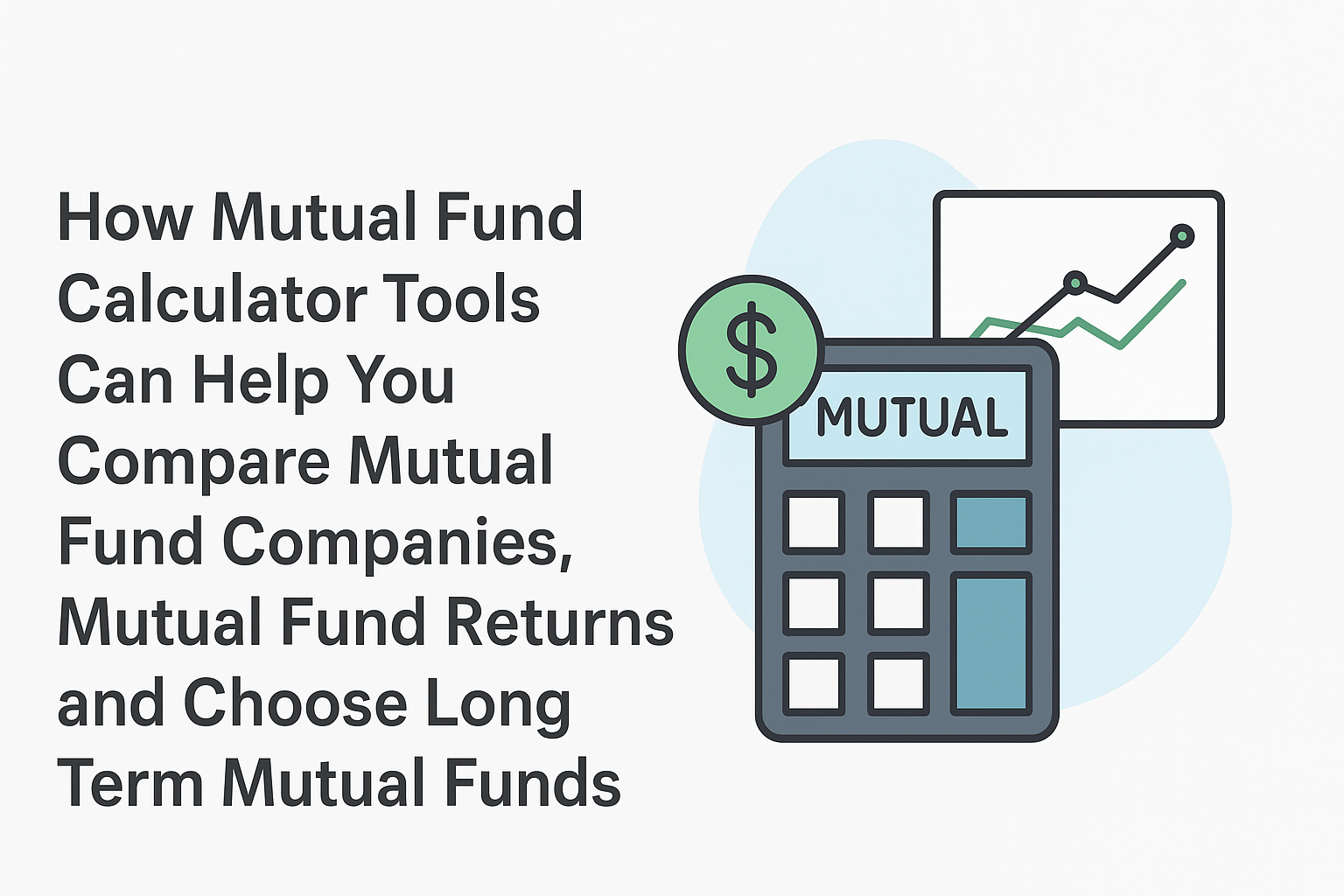Summary
Mutual fund calculator tools are simple, yet effective tools that assist investors in making more informed choices by comparing mutual fund firms, reviewing past mutual fund returns, and projecting the future worth of long term mutual funds. Whether you’re beginning an investment in mutual funds or wish to optimize your portfolio, these calculators present straightforward data on how your money can grow in the long run. By applying actual data and inputs you can tailor, they take the guessing out of it and help you feel confident in selecting funds that work best for your financial objectives — all while making investing a whole lot less intimidating.
Shopping for Wealth? Start with a Calculator
Buying mutual funds can be like entering a behemoth supermarket of money choices — there are countless brands (n.b. mutual fund groups), waves of product packaging (read: type of funds), and everybody’s got an opinion regarding what’s “best.” So how do you sort it out, particularly if you want to be wealthy in the long term?
That’s where a mutual fund calculator becomes your best shopping friend — assisting you with comparison, estimate, and decide without the hassle.
Let’s dive into how these useful tools can make your investing process easier and assist you in selecting the correct long term mutual funds confidently.
1. Why Use a Mutual Fund Calculator? It’s Your Financial Crystal Ball
Even before you jump into comparing mutual fund houses or looking at the past performance, a mutual fund calculator provides you with the most crucial thing: clarity. It reveals to you how your money can increase in the long run — be it if you invest a lump sum amount or a fixed amount regularly each month.
With only a few inputs — such as your investment, projected rate of return, and time horizon — you can see instant mutual fund returns. This doesn’t simply provide you with numbers, it provides you with context. You’re no longer estimating how your mutual fund investment will fare; you’re seeing future value.
Best of all, most calculators are user-friendly. You don’t have to be a genius when it comes to finances. In fact, working with one is like completing a puzzle with auto-completion suggestions. You simply insert the pieces, and wham. The picture forms itself.
2. Trying to Compare Mutual Fund Companies? Let the Calculator Do the Work
All mutual fund houses are not alike. Some of them are old and established, some new and pushy, and some may concentrate on particular kinds of funds — such as equity, debt, or hybrid. So when you’re stuck choosing between, say, Fund House A and Fund House B, how do you select the one that could be the better choice for you?
Here’s the best part — mutual fund calculators can also enable you to compare historical fund performance from various fund houses. Most websites permit you to input the name of the mutual fund scheme and compare historical returns over diverse time periods — 1 year, 3 years, 5 years, and so on. This provides a sense of consistency.
Has the fund performed well in bull as well as bear markets? Has the fund house lived up to its reputation across market cycles?
Comparing schemes side by side isn’t just about picking the “shiniest” fund — it’s about selecting the one that meets your long-term wealth goals. And that’s a wiser, bolder decision.
3. Estimating Mutual Fund Returns: Farewell Guesswork, Hello Data
Suppose you want to invest ₹5,000 every month for 20 years. You’ve heard that certain long term mutual funds return about 12% per year. But what does that translate to in your wallet?
With a mutual fund calculator, you can input those figures and find that your monthly investment has the potential to reach more than ₹50 lakhs. Magic? Nope — math! And once you get a glimpse of the kind of clout your regular investments carry, you’re less likely to panic over short-term market fluctuations.
You can also experiment with various scenarios — such as what if the return is 10% versus 12%? Or what if you raise your SIP by 10% annually? The calculator becomes your playground — allowing you to experiment with the future while keeping your feet on the ground.
This level of transparency makes investing in mutual funds much less daunting and much more thrilling. Now, you’re not only saving — you’re planning.
4. Discovering the Best Long Term Mutual Funds for Your Purposes
If you’re planning for long-term objectives such as retirement, funding the education of a child, or just accumulating a nest egg, you require money that is predictable, growth-seeking, and suited to your risk tolerance. That’s where the true strength of the calculator lies — it assists you in pairing fund performance with your time frame.
For instance, long term mutual funds such as equity growth funds or index funds tend to do very well over 10+ years. Your good calculator can reveal to you how such funds would have fared in the previous decade — based on real numbers, not hype. You see a realistic picture of what to expect, which sets the right expectations and prevents knee-jerk reactions when the market fluctuates.
And don’t forget, the best fund for you may not be the best for another person. With a mutual fund calculator, you can personalize your inputs and see which schemes are actually appropriate according to your income, objectives, and time horizon.
5. Making Investment in Mutual Funds a Wise Habit
One of the least appreciated advantages of employing a mutual fund calculator is that it promotes systematic investing. Once you notice how tiny, frequent investments build up over the years, it becomes more manageable to adhere to that monthly SIP. It’s not a question of “if” you’ll achieve your target — it’s a question of “when.”
It also prevents you from falling into the trap of following the hottest trendy fund. Rather than doing something on a tip from a coworker or an Instagram ad, you’re making money decisions based on figures, not buzz. And when you look at mutual fund performance across companies and categories, you begin to realize why some funds perform better than others in the long run.
And apart from that, investment planners like those offered by leading financial software and websites (e.g., FutureValue and others) are updated daily, free to access, and quite easy to find. So whether you’re sitting at your desk or on your phone while getting a coffee, investment planning is just as easy as checking the weather.
Final Thoughts: Let Data Be Your Guide
Employing a mutual fund calculator is having a smart, objective financial advisor in your pocket. It doesn’t sell you anything. It doesn’t use industry speak. It just helps you visualize your options and envision your future. Whether it is comparing mutual fund companies or projecting the returns on mutual funds, or determining what long term mutual funds to invest in, these tools make it wiser, easier, and a whole lot less anxiety-producing.
So if you’ve been afraid to start your investment in mutual funds — take five minutes, pick up a calculator, and just try going over the numbers. You might be amazed at what your money can accomplish with a bit of time and a bit of discipline.



